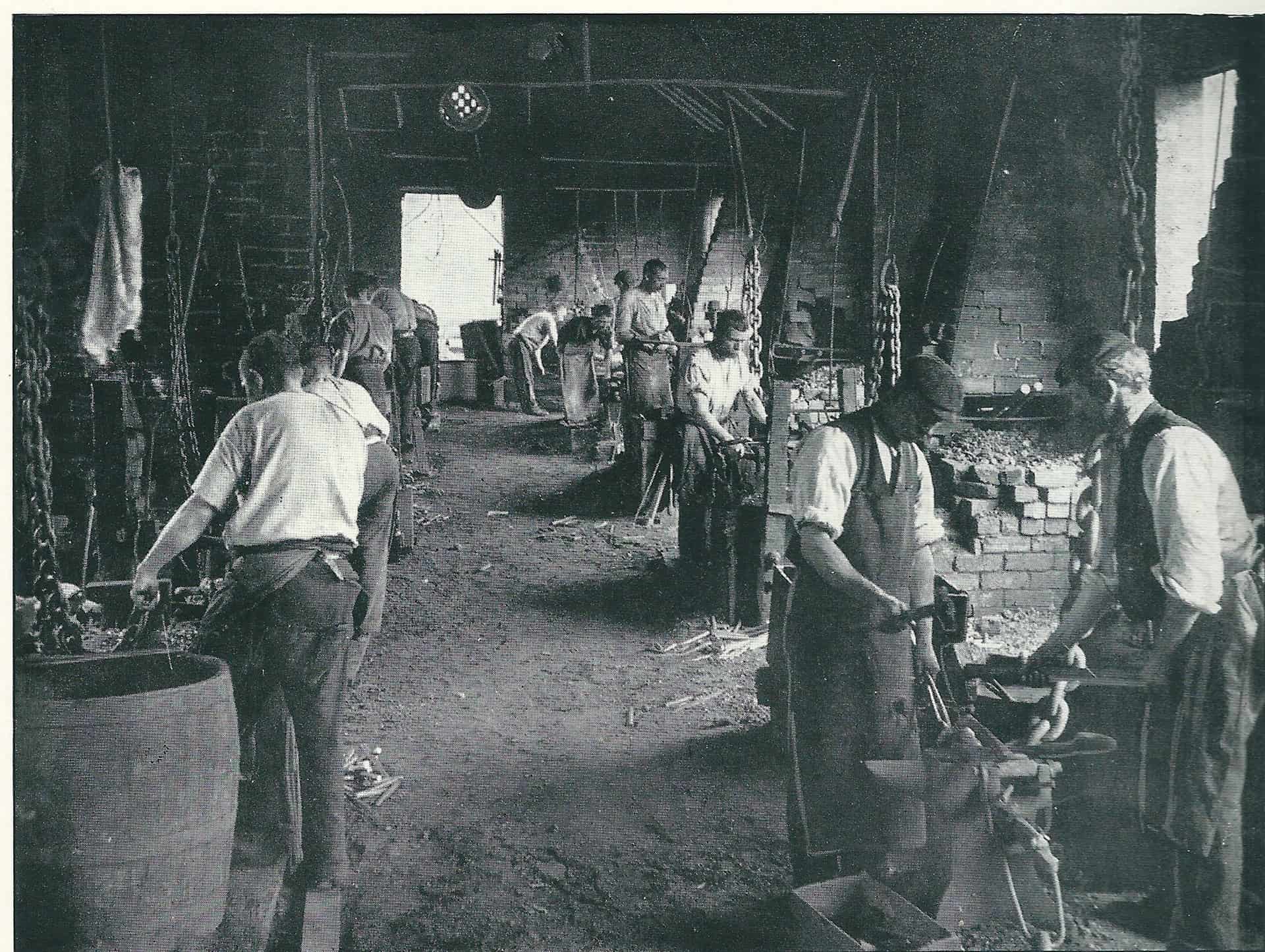Trevor Homer: The Anvil and the Hammer
I was born in Cradley, a town in the Black Country where most trades were wrought from the blacksmith’s forge. I can still recall the distant thud of stamping hammers as the blood of industry pumped through the river Stour.
The river ran adjacent to a vast swathe of common ground that was ruggedly beautiful. A lunar landscape of craggy rocks and iron remnants from long abandoned industry, overgrown with trees, shrubs and grasses — “over the brook” was where we grew up.
The term ‘cottage industry’ conjures up visions of home and trade coexisting in harmony. In this case, the “anvil and the hammer” were situated at the rear of dwellings, in domestic workshops, or ‘hearths’, so enabling the occupants to step from the kitchen to the anvil, producing handmade chain.
These ‘White Slaves of England’, as they were termed, worked without respite, save a visit to the ‘brewus’ for a quantity of ale, brewed in one of the brewhouses on site. Most of the work, which also included nail making, was done by women and children, while the men worked in the local steelworks which proliferated in a region renowned for the quality of its chain.
Accidents were commonplace, the white-hot metal taking boot and flesh as easily as a warm knife cuts through butter.
When walking to school in the mid to late 1950s, my route took me up the steps at the top of our street and through the gulley, towards a chorus of hammers ringing out from a chain-making shop.
The welcome heat through the open-barred windows offered comfort on cold misty mornings; the acrid smoke and smell of gases from the coke-fired hearths getting ever more pungent as we got closer. As we approached, men in vests and long leather aprons could be seen through the windows. We watched, fascinated by the constant movement of bodies operating treadles, overhead hoists, swinging hammers, and beating on anvils, all located within easy reach so that one man could carry out each operation in sequence until the length of chain had been forged.
The explosion of fire and fury as hammers beat white-hot metal with rhythmic precision caused us to step back to avoid the shower of sparks. Then the dull thud and hiss as the metal was quenched in a water bosh — a drink of cold ‘tay’ from a screwtop pop bottle serving as a flask — and the next piece of cold rolled bar would be grabbed by long metal tongs to begin the process again. The clamour concluded only when we entered school, a five-minute walk away, and closed the doors, until we could be mesmerised again on our journey home.
Years later I would pass the deserted building on my way to work as an apprentice with a local engineering firm.
The German writer Goethe, writing in his poem Another about man’s relationship with his environment, stated:
You must either rule and win, Or submissively give in Triumph or else give way to clamour: Be the anvil or the hammer.
